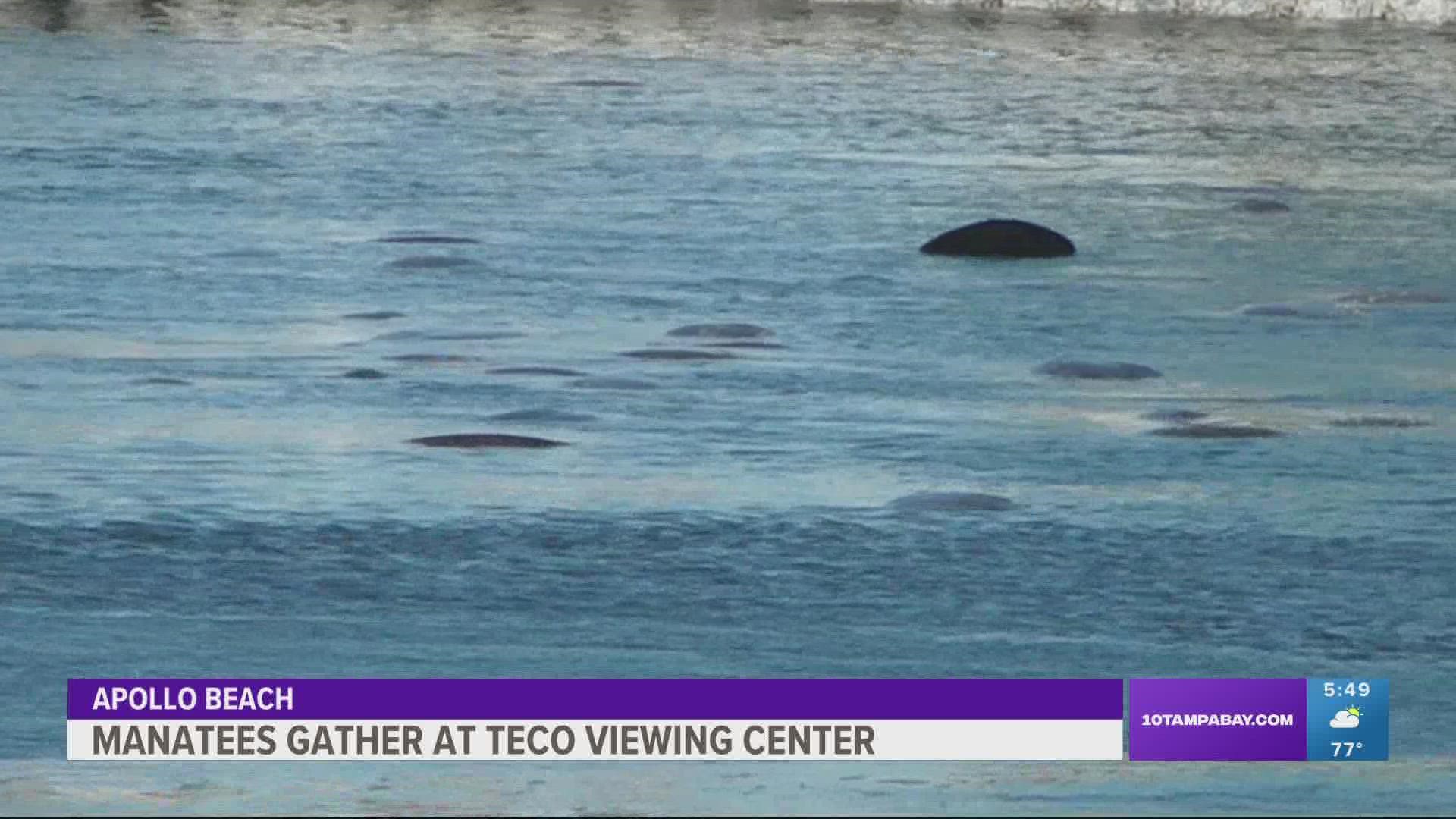APOLLO BEACH, Fla. — As the weather progressively got colder over the weekend, the manatee population is looking for warmer waters.
This means if you took a trip to somewhere like the TECO Manatee Viewing Center, you would have probably seen a large group of hundreds of sea cows huddled together.
As the cold front pushed itself into the Tampa Bay area over the past couple of days and the water temperature reached at least 68 degrees, the sea cows could be seen coming together where the waters were warm – typically water springs or power plant outflows.
The Manatee Viewing Center reopened on Nov. 1 and will stay open until April 15. TECO says when Tampa Bay's waters start to cool at about 68 degrees or lower, manatees will gather in the Big Bend Power Station's water discharge canal, sometimes by the hundreds.
At the viewing center, visitors have the opportunity to walk along boardwalks and see manatees from multiple vantage points. According to TECO, manatees have gathered in the canal to find refuge from the cold since the early 1970s.
The viewing center in Apollo Beach is open daily from 10 a.m. until 4 p.m. through April 15.
There are also live cameras that manatee lovers can watch daily to see if the animals are chilling out in the warm waters: west camera and east camera. These cameras show the sea cows all swimming in the same area, huddled together to keep warm.
And lettuce is on the menu again this year for the Sunshine State as part of an effort to slow the starvation deaths of the beloved marine mammals, wildlife officials said previously.
Plans are already in place to resume an experimental feeding program at a warm-water power plant near Cape Canaveral. Last year, about 202,000 pounds (91,600 kilograms) of lettuce was fed to manatees that gather there by the thousands when the weather turns colder.
The greater goal is to reduce pollution from agriculture, urban and sewage sources that have triggered a die-off in the seagrass beds manatees depend on for food. One water management district found that there has been a 75% drop in seagrass in the critical Indian River Lagoon since 2009.
The Associated Press contributed to this report.

